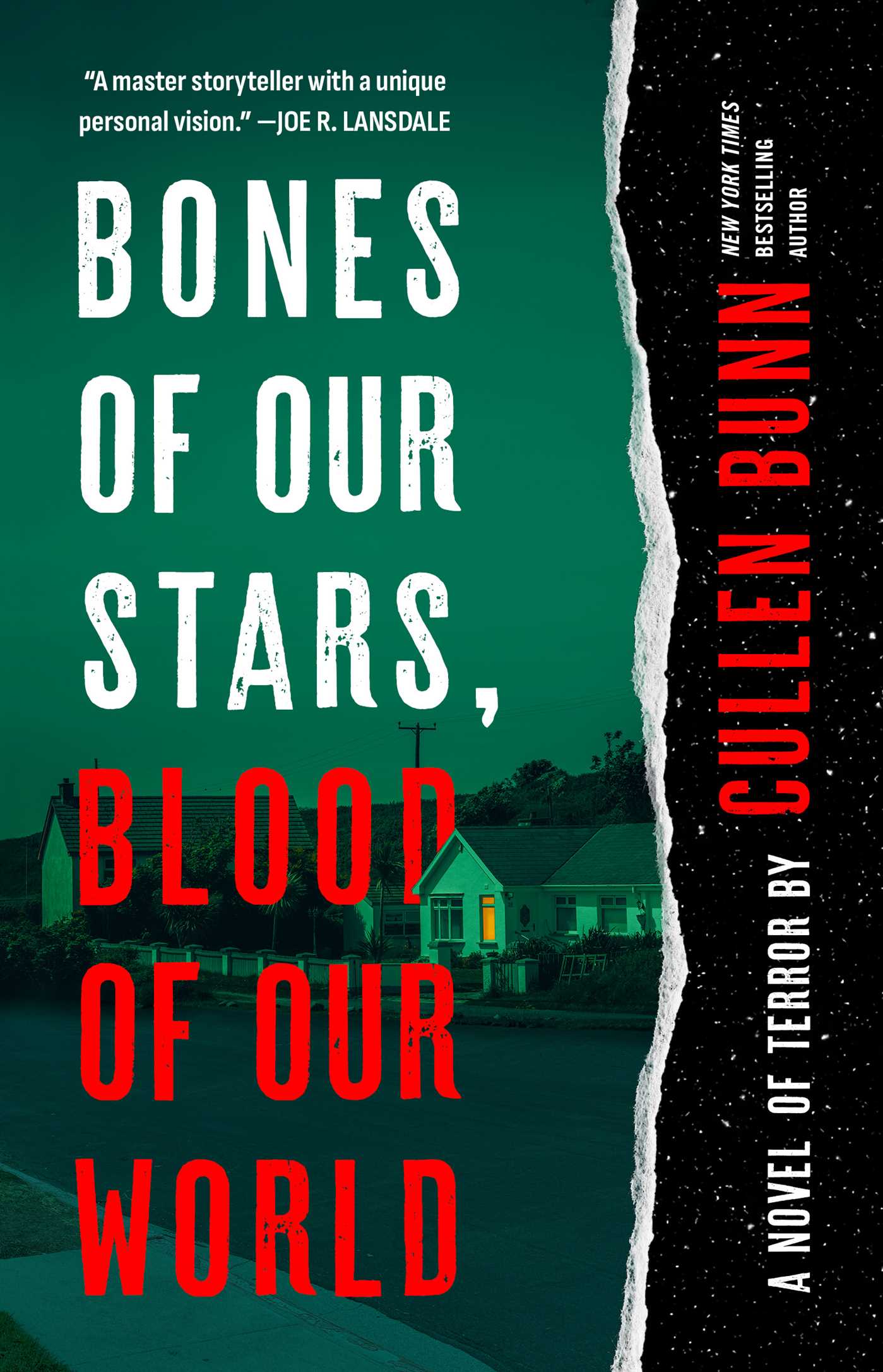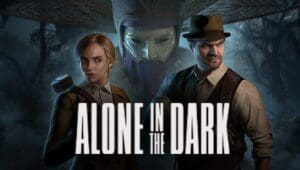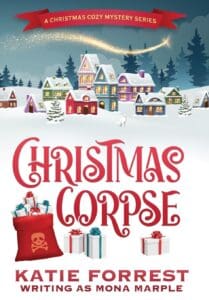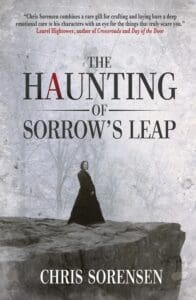
Synopsis
New York Times bestselling and Eisner Award–nominated comics writer Cullen Bunn presents his adult novel debut—a high-stakes hunt for a masked killer whose brutal murders may be a portent of an evil as ancient and cold as the stars themselves.
The bodies are stacking up on Wilson Island.
The town’s sheriff has his suspicions but no genuine evidence for an arrest, even as the murders continue and appear increasingly ritualistic in nature. And when an arrest is finally made, all hell breaks loose—literally—as a terrifying horror rises to envelop the town. Soon it’s all up to an unforgettable and motley group of residents to band together and eliminate an ancient evil in a desperate struggle for survival.
Review
Stephen King’s epic tome, IT, was my gateway into horror as a teenager (or almost-teen) way back in the 1990s. Like many lifelong horror fans, I probably read King at an age younger than I should have, bypassing entirely the works of RL Stine other kids my age were devouring. I wanted to dive straight into the deep-end and, as the Mythbusters would later say, if it’s worth doing, it’s worth overdoing. I bring this up not because Bones of Our Stars, Blood of Our World reminds me of King’s IT beyond some scant superficialities (although Bunn most certainly shares King as a foundational text as a horror creator and it shines through in his creative DNA here), but because it reminded me of those handful of days spent devouring IT. Bunn’s adult horror debut transported me back to what I felt like then as a kid sitting beachside at my parent’s summer home on Grand Traverse Bay, or lounging in a leather recliner with the door wall open and the wind carrying in the smells of the sand and lake. I was there, physically, but I was really existing somewhere else. I was in Traverse City then, but I was also in Derry, Maine with the Losers Club. For a few days in late October 2025, I was in my home or in my office, but I was really on Wilson Island with Willa and Sarah, with Sheriff Buck, and, disturbingly, with the masked No-Face killer.
I haven’t been taken back to the start of my love for horror in a long time. I’ve been reminded of it a few times, sure, but only a few of the books I’ve read in the 30 or 35 years since have really put me back in the shoes of what I felt like as a kid discovering horror for the first time and not entirely quite sure of what to expect next. A lot of it, I think, comes down to Bunn’s visions of terror here, as he tackles the breadth and depth of what horror can be. Bones of Our Stars, Blood of Our World is a smorgasbord of horrors and surprises. It’s a slasher, it’s cosmic, it’s an “animal attacks” horror, it’s a creature feature, it’s a floor wax and a dessert topping. Bunn has taken all of what I love in the horror genre and put it in a blender to create a thick, chunky, coppery slurry of blood and gore and monsters, human and otherwise.
What starts off as a shockingly brutal double-murder turns into something far more expansive as the nature of the No-Face killer, as the psycho slasher refers to himself, is slowly peeled back and the residents and tourists flocking to Wilson Island for summer break come under assault. Of course, as in Jaws, those beaches will remain open! Pregnant teenager Willa is the heart and soul of Bunn’s story, although he has a pretty expansive cast of characters that all work together to make Bones of Our Stars memorable. This one’s a people-first horror. No matter how squicky it gets – and, boy, does it ever get squicky with eviscerations galore – Bunn knows that the horrors don’t mean a thing if we don’t care about the inhabitants of Wilson Island first and foremost. Who cares who the killer is disemboweling if we don’t have somebody to root for? Where’s the sense of loss in Bunn’s nobody is safe attitude if we don’t give a damn about any of them to begin with? Bunn puts in a ton of effort making this crew three-dimensional and alive before reducing them to dead meat sacks. I didn’t like Sheriff Buck upon meeting him, but I couldn’t help wondering how things might shake out between him and that waitress he’s got a crush on. I was invested in Willa and her relationships and how her parents would react upon learning of her pregnancy. We get a few interludes from the townsfolk and tourists, who exist beyond the circle of our core cast and are there to remind us that Wilson Island is a living, breathing, functioning locale with plenty of color thanks to the reporter, its police, its citizens, the homeless, and their relationships to one another, plus the odd old misfit who sometimes forgets to wear clothes before going for his morning run. Wilson Island feels authentic and lived-in, and I know Bunn’s Derry-esque habitat is just one small part of why Bones of Our Stars took me back to my days as a burgeoning teenage horror fan on the lake.
What really took me back — what surprised me most, and happily so — was Bunn’s everything but the kitchen sink approach to horror. Like the Mythbusters, Bunn clearly believes that if it’s worth doing, it’s worth overdoing, gods bless him. He reminded me that a horror story doesn’t have to be any one type. Horror is an elastic genre, and while marketing buzzwords can reduce it to one particular thing (a slasher book, a vampire story, a zombie novel), it can also be damn near all of those genres in one batshit crazy, over the top small-town horror story when it needs to be. It can — and should! — go well beyond what’s merely expected and surprise us with its irregularities and shock us with its author’s twistedness and willingness to go there and beyond. This book is a crystal-clear distillation of Bunn’s love for the horror genre and a reminder of how fun and rewarding horror can be when it’s busy doing way more than we ask of it.
A long-time comics scribe and creator of works like Harrow County, The Sixth Gun, and The Empty Man, you can tell Bunn loves it all, from the ’80s and ’90s paperbacks from Zebra, Dorchester, Dell Abyss, and the like, all the way up to modern big-screen scares and as far back as the old 1950s nuclear creature features. I think it’s Bunn’s nearly-two decades in comics that give Bones such a cinematic feel while reading. Each page unfurls like film in the mind’s eye, gnarly and grainy, with the horrors presented in the highest of definitions. There’s no unseeing some of these kills or the devastation wrought by attacking mutant menaces. One segment wouldn’t be at all amiss in Gregory A. Douglas’s pulpy, mutant cockroach horror, The Nest. Other times it feels like Jaws by way of Se7en, or Scream meets J.F. Gonzalez’s Clickers. Bones of Our Stars is messy and gory as hell, a throwback to the classic pulp horror books and supremely wet practical effects movies of yesteryear – so much so that it feels surprising a major mainstream publisher is releasing this instead of a ballsy, small-press indie label like Grindhouse Press. After so long working in the trenches (or, some might say, the gutters) of comics, I feel like we’ve been long overdue an adult prose horror novel from Bunn and now he’s spoiled us with all these riches in one singular story. After reading Bones of Our Stars, my only concerns now are, when’s the next book releasing, and where the hell does he go from here?









Leave a Reply